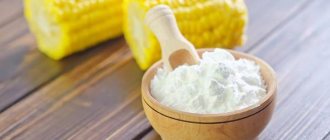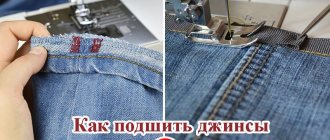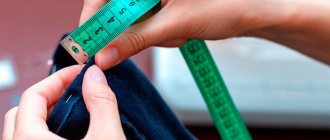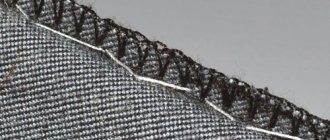The operation of the sewing machine is described in detail in the instructions for any sewing machine. Try to comply with the requirements of this manual. Lubricate your sewing machine periodically using only special sewing machine oil. Take care not only of the appearance of the sewing machine, but also clean its internal compartments of frays, dirt, and oil residues.
If you want to see how to properly oil your sewing machine, watch this video. You will learn how to lubricate all components and mechanisms of a sewing machine, including those located inside the body.
Proper operation of sewing machines is the key to operation without breakdowns
Proper operation of sewing machines is the key to its long-term operation without breakdowns. Unfortunately, often we simply don’t even read the instruction manual to the end. We figured out how the sewing machine works, and that’s enough, let’s start sewing. However, based on experience, we can conclude that the main cause of sewing machine breakdowns is non-compliance with the operating rules clearly indicated in the sewing machine manual.
In addition to the lubrication diagram for the sewing machine and the brand of machine oil, the instructions provide recommendations for selecting sewing needles, indicate which fabrics can be sewn on this machine, which sewing threads are best to use, etc.
A sewing machine, be it a Chaika or the latest computer-controlled Singer, is, first of all, a mechanism that requires periodic lubrication and maintenance. However, it is worth noting that many modern models use super-sliding materials that do not require lubrication of the machine at all. But such “happiness” can be bought for no less than $500.
Any sewing machine is designed for certain loads of components and parts, and sewing thick and coarse fabrics on household seamstresses is the main reason for the breakdown and failure of components in many of them. Untimely lubrication of the sewing machine or lack thereof at all is the second reason, and improper storage of the sewing machine is the third.
What else is in the instructions?
Regardless of whether your machine is old or ultra-modern, the instructions always indicate:
- what oil to lubricate a sewing machine;
- what fabrics can be sewn on it;
- which needles are better to choose;
- what threads are suitable for different fabrics and for your machine.
Important! If you buy a new “seamstress” from a good manufacturer, you will most likely find a bottle of machine oil in the kit. It will last for a long time, and in the future it is better to buy just that.
As for fabrics and sewing accessories, we must not forget that the machine is a mechanical device, that is, it is designed for certain loads. For example, the antediluvian Singer or “Podolsk” can even sew denim in six to eight layers, and many modern computer-controlled machines, if they do not have the function of working with coarse fabrics, will certainly fail from such treatment.
Regular lubrication of the sewing machine is the main condition for operation.
In many cases, repair of sewing machines will not be necessary if you carefully care for the sewing machine, keep it clean, and lubricate it with sewing oil in a timely and regular manner. If a seamstress takes care of her machine, then she will probably protect it from overload during work and not leave it in the hands of others, which means it will break down less often.
After prolonged work, you should periodically clean the shuttle compartment and other accessible places from dust, fringes, and oil stains. Sometimes, you should clean the shuttle itself, the shuttle mechanism, and the bobbin case with a hard hair brush. Over time, thread and fabric frays and dust accumulate in the bobbin case. They become compacted and interfere with the free rotation of the bobbin.
For each machine, the operating instructions include a sewing machine lubrication diagram. However, you can follow a simple rule - lubricate any metal components that have friction. Even the grooves in which the shuttle rotates can be lubricated with one or two drops of machine oil. It is advisable to sometimes remove the bottom cover and lubricate the lower “inaccessible” rotating units with sewing oil. Just be careful not to remove those housing covers that you will not be able to put back on the machine after lubricating them.
Bobbin case device. Cleaning the bobbin compartment
1-Bobbin case. 2-Hook fastening levers. 3-Central rod for fixing the bobbin case latch. 5-Shuttle. 6-Shuttle guide. 7-Protrusion of the shuttle.
The bobbin compartment becomes dirty with fabric frays and thread fragments, which sometimes penetrate the bobbin case and are pressed onto its walls, interfering with the free movement of the bobbin. You should inspect it before installing it back and, if necessary, clean the walls from fringes with a stiff brush. In addition, it is necessary to disassemble the shuttle itself, as shown in the diagram. Be sure to lubricate the shuttle movement grooves with a small amount of oil.
In general, try not to waste too much oil in the shuttle compartment. Oil can get in as the thread moves upward and stain your product, even after a long time. If your machine has a horizontal shuttle, the grooves do not need to be lubricated. The shuttle is made of plastic and does not require lubrication. But the swinging shuttles are completely metal, so a little lubrication will do the trick.
When installing the hook back, position it as shown in the figure so that the hook guide 6 forms a crescent moon on the left side of the sewing machine. Holding the shuttle 5 by the central rod 3, position it so that it forms a crescent on the right side. Protrusion 7 shown in the figure will be at the bottom. Place bobbin plate 4 on top. Return levers 3 to their original position until they click.
Sewing oil for lubricating sewing machines and overlockers
It is better to take sewing oil or it is also called machine oil into a medical syringe and drop small drops into accessible places. More precisely, in those places where there is friction of metal parts with each other. The instructions for the sewing machine indicate lubrication points, but you can take the initiative and remove the top cover, bottom cover and find those components that are hidden under them and are not indicated in the instructions. After such thorough lubrication, the machine will work twice as quiet and softer, “purring” like a cat that has been stroked by its owner.
And, most importantly, you cannot use any other brand of oil other than sewing machine oil. Unfortunately, cases of using unsuitable oils, including sunflower oil, are not uncommon. The use of oils that are not specified in the operating instructions for the sewing machine sometimes leads to the fact that it does not turn and “jams.” Some types of oil tend to dry out over time, turning into glue, “tightly” gluing the lubricated parts. For information on how to “use” such a machine, see the article Sewing machine Podolsk.
Which components need to be lubricated?
When you first think about how to lubricate a Singer, Chaika or any other sewing machine, decide which parts need it. This is usually indicated in the instructions. But if suddenly there are no instructions, lubricate all metal components where there are parts that are subject to friction.
Important! You can even process the grooves in the shuttle compartment - it won’t make anyone worse, but it may even be beneficial.
You will need some free space. Keep in mind that on the table where you will tidy up your assistant, there should not be any valuable things that can be stained with machine oil. In addition to the table itself, you need:
- oilcloth or plastic film;
- screwdriver with a narrow blade;
- napkins or a sheet of writing paper;
- white sheet or small box;
- lint-free rags;
- felt-tip pen.
Important! Oilcloth and polyethylene can be successfully replaced with old newspapers or an unnecessary rag. The main thing is not to stain the table, but how you achieve this is the tenth matter. As for the screwdriver, it should be small, but strong and convenient.
It is advisable to lubricate your sewing machine at least once every six months.
It is advisable to lubricate a sewing machine or a household overlocker at least once every six months. After lubrication, you need to run it “idle” for a while, especially if the machine has not been used for a long time. During operation, the oil heats up slightly and penetrates better into friction units and areas. This recommendation is more suitable for old-style sewing machines, such as Podolskaya 2M PMZ, Singer, etc.
Many modern machines do not require lubrication at all. This is possible through the use of modern technologies that use super-slippery artificial polymers at friction points instead of metal. In such machines, lubrication can only do harm. Therefore, carefully read your sewing machine operating instructions, especially when buying a new machine. The manual for it always details the rules for care and use. The instructions also indicate how to lubricate it, in what places and how often. What fabrics can be sewn, the type of needles used, etc. Do not neglect the recommendations of the sewing machine operating instructions. It was compiled by the engineers who created this machine. They write, of course, boringly, but they know very well what they are writing about.
Machines with rotating rotary shuttle
These are old VERITAS cars, modern BERNINA, PFAFF cars (limited number of models), they are installed in some models of cars from Chinese companies. The rotating shuttle is the most durable and high-quality, allowing you to sew at high speed. Therefore, they are installed in almost all models of industrial machines. It is enough to keep this shuttle clean (brush) and drip about 3 drops of oil between its movable and stationary parts.
In all sewing machines, the needle bar block and its adjacent hinges should be cleaned and lubricated. To do this, remove the left cover (where the light bulb is located), clean out the dust and dirt with a brush, and apply oil to the needle bar rod and adjacent hinges.
It is very useful to clean the dust between the teeth of the fabric conveyor (rack). In my practice, there have been cases of motor breakdowns (expensive replacement) due to uncleaning of sewing equipment - the mechanisms jam, then the motor *burns out*.
How often should you oil and clean your sewing machine?
It all depends on the amount of load on the machine, hours worked (Total 8 hours of sewing).
- Those who sew a lot - clean and lubricate 2-3 times a week
- For those who don’t sew much, clean and lubricate 1-2 times a month.
Doing all this is quite simple without inviting a specialist to your home. Of course, only a master will do full maintenance (including disassembling the case).
Depending on the amount of sewing, a specialist is invited for full maintenance once a year. Then the sewing equipment will thank you with high-quality and durable work.
A FORUM will soon open on our website with various interesting topics:
- selection of sewing equipment
- discussion of specific models
- technical problems
- and other useful topics
I will be a technical moderator and will be happy to answer all your questions.
MTS:+375(29) 768-40-40
VELCOM:+375(44) 768-40-40
e-mail:
You might be interested in looking at Chaika sewing machines or Singer sewing machines.
Properties of oils
The price of oil for sewing machines also depends on the properties and degree of purification. Of course, the cleaner and more transparent the oil, the better it is: it does not stick parts together and does not leave stains on the fabric. In addition to purity, lubricating oil may have the following properties:
- Viscosity. This is a value indicating how strong the oil film will be on the lubricated parts. The optimal viscosity index for sewing equipment is 18-20. As a rule, for high-speed machines, oil is taken with a higher viscosity.
- Pour point. At low temperatures, the oil loses its mobility. If your cars are constantly in a well-heated room, then this is not a threat to you.
- Anti-oxidative properties - the ability not to deteriorate under external influences, that is, a shorter or longer service life.
- Cleaning properties - the ability to prevent dust from adhering.
- Additive content. Additives are additives that improve the properties of the oil (for example, so that it does not foam).











